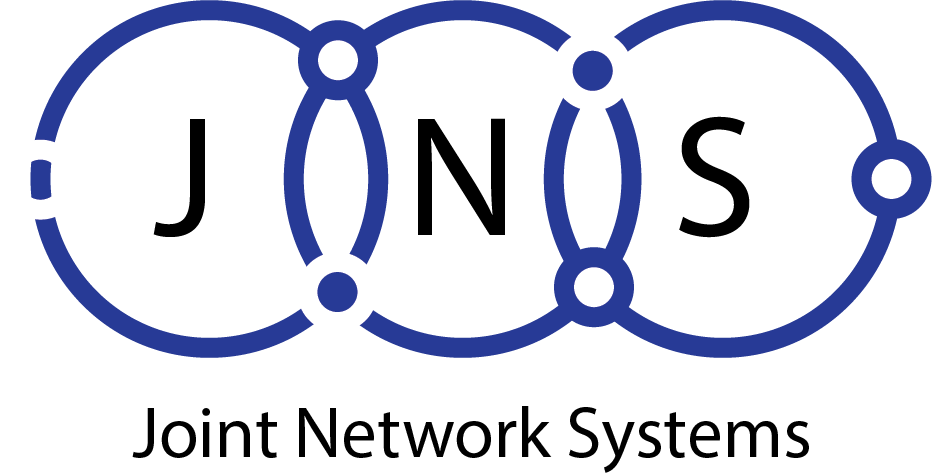
Microsoft has announced the general availability of its cloud-based workstations, Microsoft Dev Box, optimized for developer use cases and productivity. The platform, first announced at Microsoft Build 2022, has been in development for over seven years, with the aim of improving developer productivity and satisfaction through the power of the cloud.
Streamlining Development with Preconfigured Workstations
Dev Box provides developers with ready-to-code, cloud-based workstations that can be spun up in seconds. The platform integrates with Visual Studio and offers configuration-as-code customization, allowing developers to create multiple, tailored configurations for specific projects. The solution is built on Windows 365, providing enterprise-ready security, compliance, and cost management capabilities. Developers can also deploy environments for any stage of development using Azure Deployment Environments, which are also generally available.
Enhancing Collaboration and Security in Development
Microsoft Dev Box has already been stress-tested internally at Microsoft, with over 10,000 engineers using the platform. Several customers are also using Dev Box in production environments. The pricing model for Dev Box is flexible, offering a predictable monthly price for full-time usage and consumption-based, pay-as-you-go pricing for part-time use. The platform also provides comprehensive access controls and a centralized view of all dev boxes across the organization to help maximize security.
The platform is compatible with all developer IDE platforms, any development kit, or any internal tool that is compatible with Windows. It functions on IoT, Gaming, mobile, and desktop applications through Windows Subsystem for Linux and is available on Windows, macOS, iOS, Android, and on the web. For more information or to start a proof of concept, you can visit the Microsoft Dev Box website. For more details about the capabilities of Dev Box, you can read the announcement on the official Azure website.
Azure Virtual Desktop vs. Microsoft DevBox vs. Windows 365
With Azure Virtual Desktop (AVD), Microsoft DevBox, Windows 365 Cloud PC and Windows 365 Frontline, Microsoft offers three cloud-based solutions with different benefits and features for remote work and development.
Azure Virtual Desktop (AVD) is a comprehensive desktop and app virtualization service that runs on the Azure cloud. It allows users to access Windows 10 desktops and apps from any device and location, with built-in security and compliance features. AVD is ideal for organizations that need to scale up or down their remote workforces, or that want to provide a consistent and personalized user experience across devices.
Microsoft DevBox is a cloud-based development environment that enables developers to create, test and debug applications using Visual Studio Code and GitHub Codespaces. DevBox provides a fully configured Windows 10 desktop with pre-installed tools and frameworks, such as .NET, Python, Node.js, Docker and Kubernetes. DevBox is ideal for developers who want to quickly set up and start coding without worrying about installing or updating software on their local machines. AVD and Microsoft Dev Box both provide Windows desktop environments, but AVD covers more general virtual desktop infrastructure (VDI) use cases compared to Dev Box.
However, Dev Box is designed specifically for higher-end developer scenarios, with a focus on self-service of multiple dev boxes through a dedicated portal. Dev Box is optimized for specific projects, enabling developers to get up and running faster. Unlike AVD, Dev Box does not allow multiple users per dev box, and it has specific licensing requirements for Windows and Intune. Dev Box users access a portal that is also used by Azure Deployment Environments, which is a good integration point for Azure Developers who prefer not to use the main Azure Portal that is infrastructure-focused.
Windows 365 is a service that streams a full Windows 10 or 11 desktop to any device, including Mac, iPad, Linux and Android. Users can access their Cloud PC from any web browser or the Microsoft Remote Desktop app, and enjoy the same performance, settings and apps as on their physical PC. Windows 365 is ideal for users who want a secure and consistent Windows experience across devices, or who need to access specialized or legacy applications not available on other platforms.
Windows 365 Frontline is variant of Windows 365 designed for frontline workers, such as retail, hospitality, and healthcare staff. It provides a streamlined and secure Windows 10 or Windows 11 experience with access to only the apps and data that users need for their specific tasks. Users can use any device to access their cloud PC, including shared or personal devices, mobile devices, or thin clients. Windows 365 Frontline also supports features such as kiosk mode, single sign-on, and conditional access policies.
Windows 365 Cloud PC and Windows 365 Frontline are managed by Microsoft Endpoint Manager, allowing IT admins to easily deploy, update, and monitor the cloud PCs. Both types of cloud PCs also benefit from the security and reliability of Microsoft Azure, which ensures that the data and apps are always protected and available.
The main difference between Windows 365 Cloud PC and Windows 365 Frontline is the level of customization and flexibility that they offer. Windows 365 Cloud PC gives users more control over their cloud PC settings and features, while Windows 365 Frontline gives IT admins more control over the user experience and security policies. Depending on your use case and requirements, you can choose the type of cloud PC that best suits your needs.



Microsoft has announced the general availability of its cloud-based workstations, Microsoft Dev Box, optimized for developer use cases and productivity. The platform, first announced at Microsoft Build 2022, has been in development for over seven years, with the aim of improving developer productivity and satisfaction through the power of the cloud.
Streamlining Development with Preconfigured Workstations
Dev Box provides developers with ready-to-code, cloud-based workstations that can be spun up in seconds. The platform integrates with Visual Studio and offers configuration-as-code customization, allowing developers to create multiple, tailored configurations for specific projects. The solution is built on Windows 365, providing enterprise-ready security, compliance, and cost management capabilities. Developers can also deploy environments for any stage of development using Azure Deployment Environments, which are also generally available.
Enhancing Collaboration and Security in Development
Microsoft Dev Box has already been stress-tested internally at Microsoft, with over 10,000 engineers using the platform. Several customers are also using Dev Box in production environments. The pricing model for Dev Box is flexible, offering a predictable monthly price for full-time usage and consumption-based, pay-as-you-go pricing for part-time use. The platform also provides comprehensive access controls and a centralized view of all dev boxes across the organization to help maximize security.
The platform is compatible with all developer IDE platforms, any development kit, or any internal tool that is compatible with Windows. It functions on IoT, Gaming, mobile, and desktop applications through Windows Subsystem for Linux and is available on Windows, macOS, iOS, Android, and on the web. For more information or to start a proof of concept, you can visit the Microsoft Dev Box website. For more details about the capabilities of Dev Box, you can read the announcement on the official Azure website.
Azure Virtual Desktop vs. Microsoft DevBox vs. Windows 365
With Azure Virtual Desktop (AVD), Microsoft DevBox, Windows 365 Cloud PC and Windows 365 Frontline, Microsoft offers three cloud-based solutions with different benefits and features for remote work and development.
Azure Virtual Desktop (AVD) is a comprehensive desktop and app virtualization service that runs on the Azure cloud. It allows users to access Windows 10 desktops and apps from any device and location, with built-in security and compliance features. AVD is ideal for organizations that need to scale up or down their remote workforces, or that want to provide a consistent and personalized user experience across devices.
Microsoft DevBox is a cloud-based development environment that enables developers to create, test and debug applications using Visual Studio Code and GitHub Codespaces. DevBox provides a fully configured Windows 10 desktop with pre-installed tools and frameworks, such as .NET, Python, Node.js, Docker and Kubernetes. DevBox is ideal for developers who want to quickly set up and start coding without worrying about installing or updating software on their local machines. AVD and Microsoft Dev Box both provide Windows desktop environments, but AVD covers more general virtual desktop infrastructure (VDI) use cases compared to Dev Box.
However, Dev Box is designed specifically for higher-end developer scenarios, with a focus on self-service of multiple dev boxes through a dedicated portal. Dev Box is optimized for specific projects, enabling developers to get up and running faster. Unlike AVD, Dev Box does not allow multiple users per dev box, and it has specific licensing requirements for Windows and Intune. Dev Box users access a portal that is also used by Azure Deployment Environments, which is a good integration point for Azure Developers who prefer not to use the main Azure Portal that is infrastructure-focused.
Windows 365 is a service that streams a full Windows 10 or 11 desktop to any device, including Mac, iPad, Linux and Android. Users can access their Cloud PC from any web browser or the Microsoft Remote Desktop app, and enjoy the same performance, settings and apps as on their physical PC. Windows 365 is ideal for users who want a secure and consistent Windows experience across devices, or who need to access specialized or legacy applications not available on other platforms.
Windows 365 Frontline is variant of Windows 365 designed for frontline workers, such as retail, hospitality, and healthcare staff. It provides a streamlined and secure Windows 10 or Windows 11 experience with access to only the apps and data that users need for their specific tasks. Users can use any device to access their cloud PC, including shared or personal devices, mobile devices, or thin clients. Windows 365 Frontline also supports features such as kiosk mode, single sign-on, and conditional access policies.
Windows 365 Cloud PC and Windows 365 Frontline are managed by Microsoft Endpoint Manager, allowing IT admins to easily deploy, update, and monitor the cloud PCs. Both types of cloud PCs also benefit from the security and reliability of Microsoft Azure, which ensures that the data and apps are always protected and available.
The main difference between Windows 365 Cloud PC and Windows 365 Frontline is the level of customization and flexibility that they offer. Windows 365 Cloud PC gives users more control over their cloud PC settings and features, while Windows 365 Frontline gives IT admins more control over the user experience and security policies. Depending on your use case and requirements, you can choose the type of cloud PC that best suits your needs.


